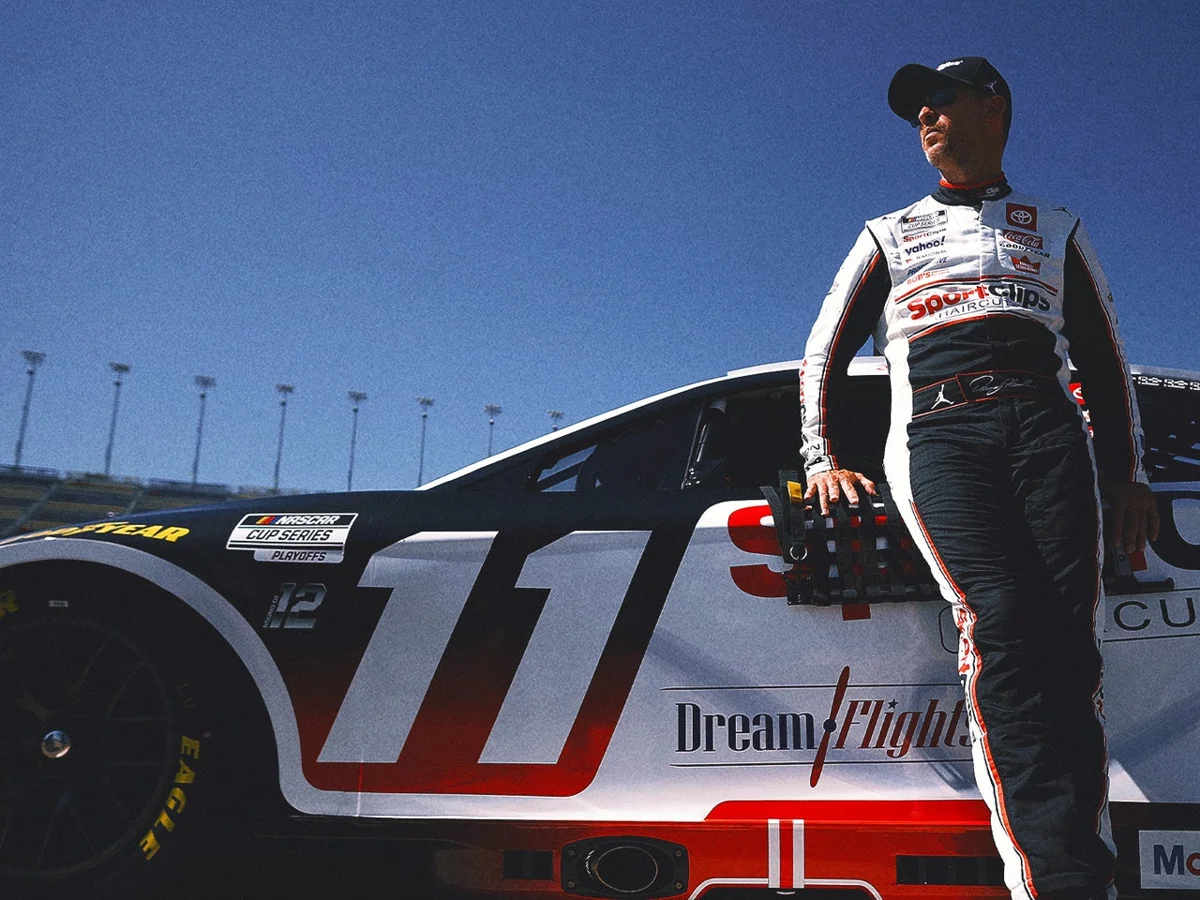NASCAR’s appeal has significantly diminished over recent years, with former stars like Dale Earnhardt Jr. and Jeff Gordon no longer drawing the widespread attention they once did. This shift is especially evident from the declining numbers in playoff viewership. Denny Hamlin, a seasoned NASCAR driver, recently shared his perspective on why the sport is experiencing such a sharp drop in audience engagement, highlighting issues behind the falling ratings.
Denny Hamlin’s Perspective on the Loss of Viewer Interest
Hamlin believes the current NASCAR format has lost much of its previous charm, particularly the playoff system that undervalues consistent performance throughout the season. Fans feel the championship outcome hinges disproportionately on a single race, such as the event at Phoenix, which diminishes interest in the rest of the season.
As an example, last year’s champion Joey Logano had an average finish of 17.11, one of the poorest averages ever recorded by a title winner. This uneven structure frustrated viewers, leading to calls for changes. However, despite these appeals, the playoff format remained unaltered for the 2025 season, a factor which may have fueled a viewer protest reflected in the continuing decline of ratings.
Though data for the latest Kansas race has not been released, the three prior races attracted fewer than two million viewers each—Gateway had 1.53 million, Bristol 1.54 million, and New Hampshire 1.29 million.

Impact of TV Deals and Broadcast Changes on Audience Numbers
On his Actions Detrimental Podcast, Hamlin discussed the negative impact of NASCAR’s television agreements on its reach.
“Just not good. I don’t know. I mean, we signed the deal that we signed. We obviously lost a significant amount of network races in this TV deal. In each one of the TV deals that we’ve signed over the last few years, or the past few agreements that we’ve had, we’ve always just taken the most amount of money. It’s not been about what’s going to put us in the most households,”
Hamlin remarked.
The current media rights are split among four broadcasters: Fox, Amazon Prime, TNT, and NBC. Hamlin indicated this fragmentation likely hurt the sport by dispersing the audience.
“We were the guinea pigs to get channel X off the ground, channel Y off the ground, and it’s just asking so much of your fans to keep chasing you around all these different networks,”
he said.
Competition with NFL and the Challenge of Sunday Scheduling
NASCAR’s playoff schedule overlaps with the National Football League’s season, which pulls significant viewership away from the Cup Series. Hamlin suggests that directly competing with the NFL on Sundays is a losing battle, and NASCAR might benefit by positioning itself as the prime alternative when football is not airing.
He explained,
“When the NFL has taken such a lion’s share of those eyes right now, record-setting every single week, that’s their priority. And if football is not on, then I think you’ve got a legitimate shot at being next in line. But going head-to-head, it’s just going to be a tough road.”
Streaming Versus Traditional Broadcasting: NASCAR’s Distribution Dilemma
Another obstacle in maintaining a robust audience is NASCAR’s commitment to a predominantly traditional TV broadcast schedule, which may no longer align with evolving viewer habits. As streaming platforms gain dominance, sticking mostly to network television could be alienating potential fans and accelerating the decline in viewers.
If NASCAR does not promptly adapt by rethinking its broadcasting strategy and improving the playoff format, the current downward trajectory in viewership risks worsening, potentially threatening the sport’s future popularity.
